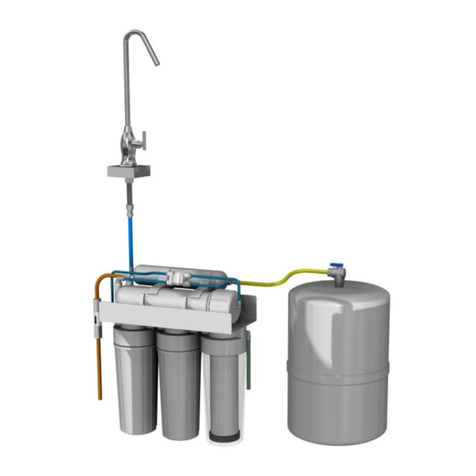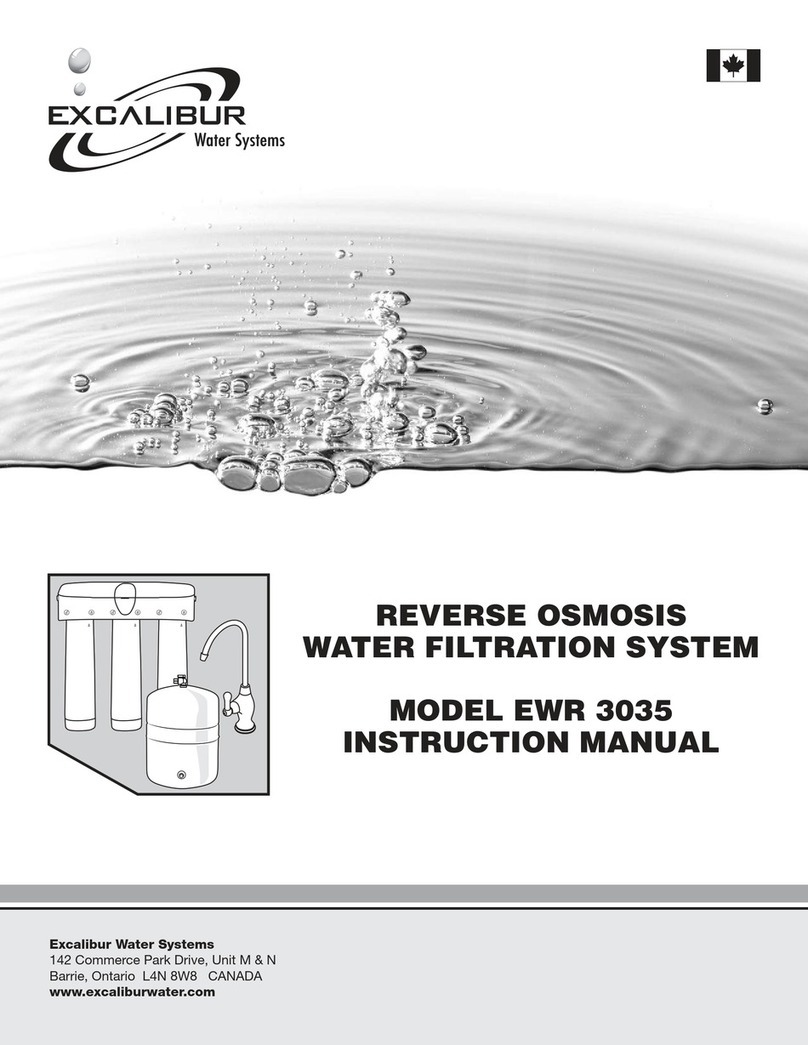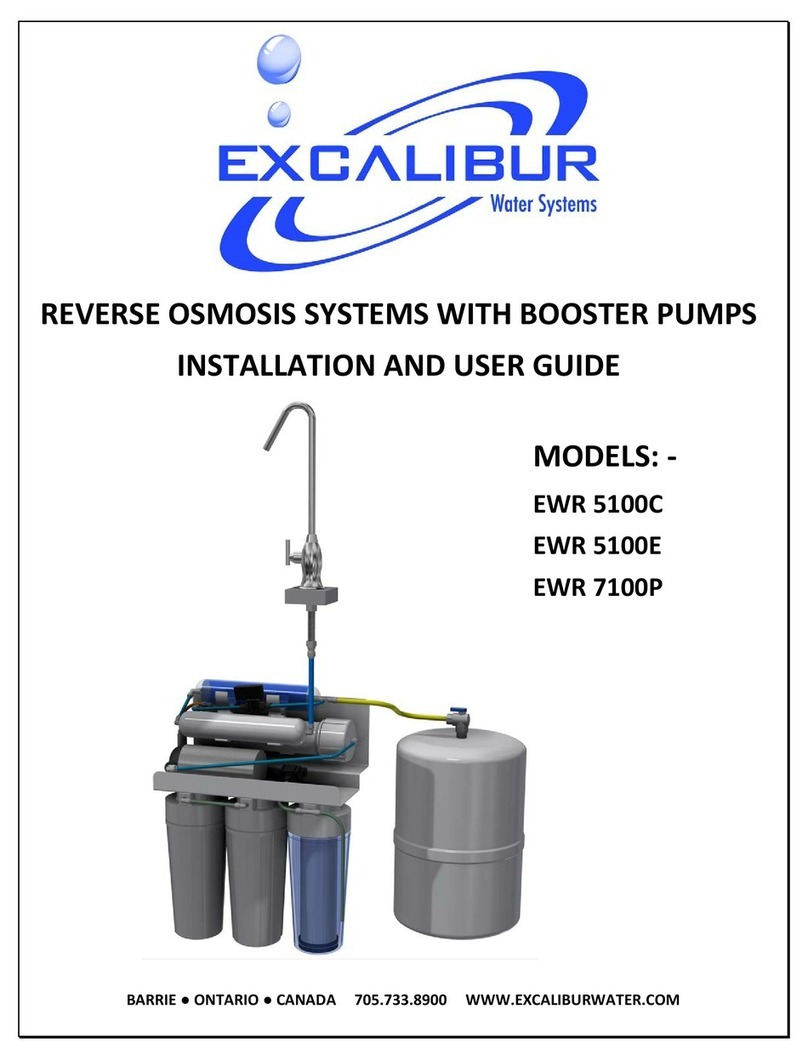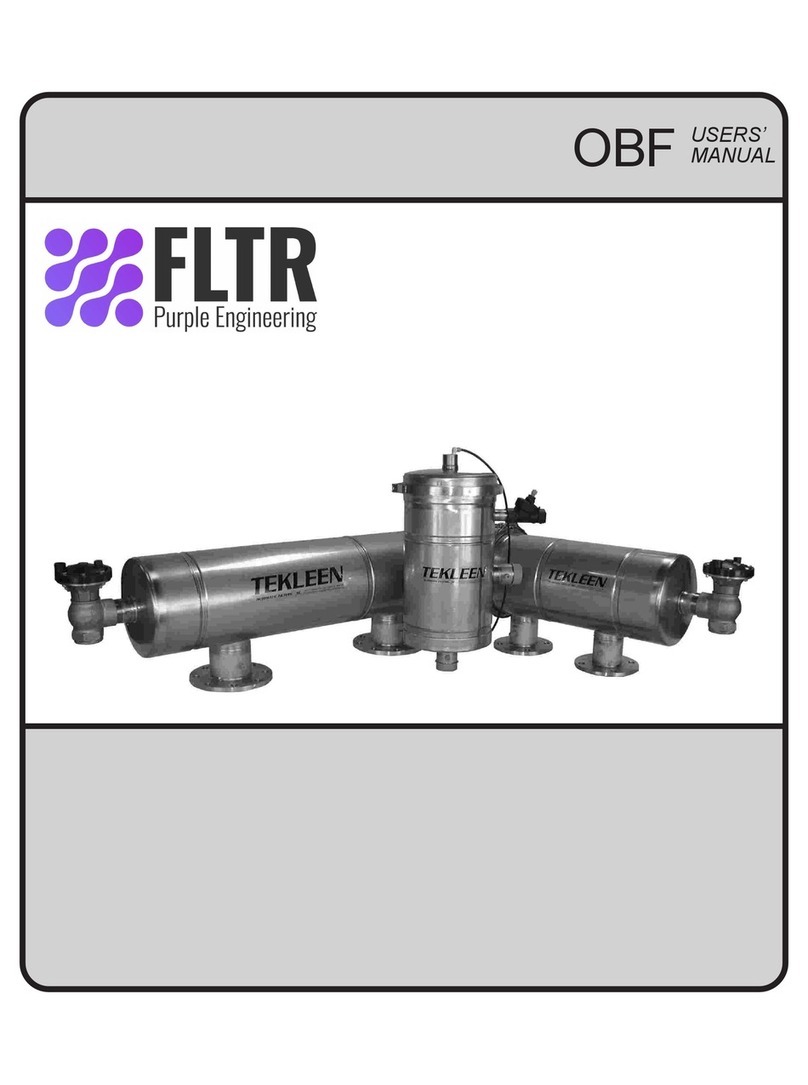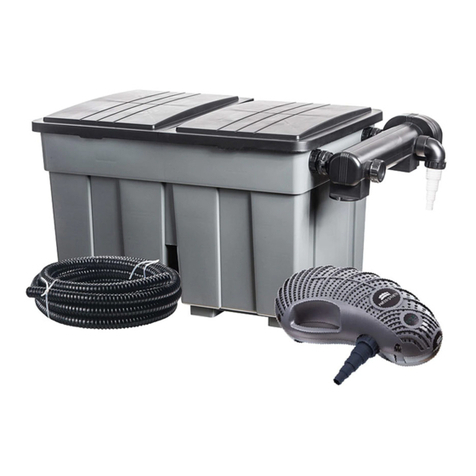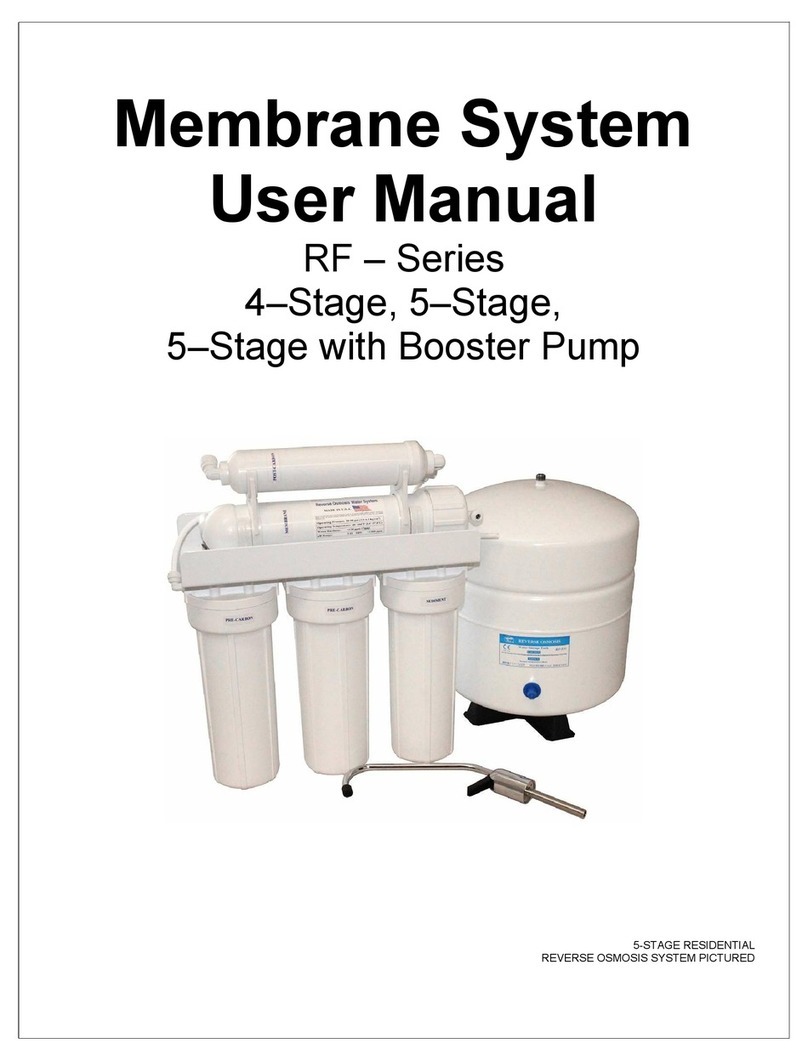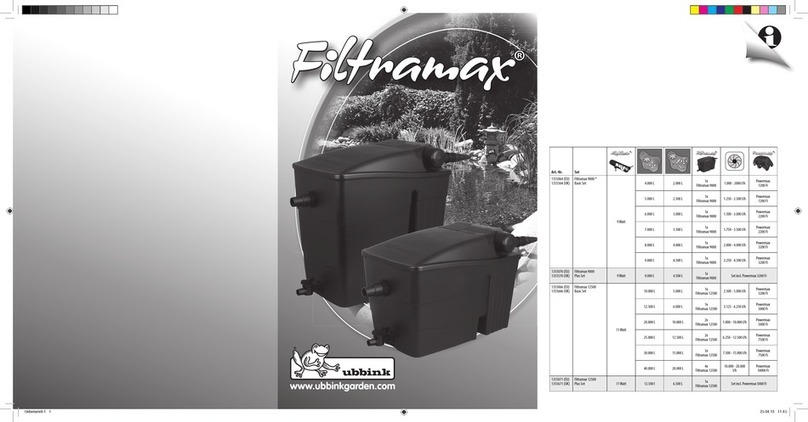
B. Tools Recommended for Installation
The following tools will cover most of the
installation sites encountered:
1. 3/8" variable speed electric drill.
2. Extension work light with outlet.
3. Safety glasses.
4. 11/4" Greenlee hole punch and 1/8" and
½"metal drill bits for pilot hole.
6. Center punch and hammer.
7. 11/4" wood bit.
8. Concrete drill bits.
The Reverse Osmosis System was designed to fit
under a sink, however, because of space limitations
or other reasons, the system's flexible design allows
for other locations. When determining the location
remember that access to a cold water tap line, the
household drain, and ease of filter replacement are
important considerations.
All components and tubing should be located in an
area not exposed to freezing temperatures. If winter
temperatures are sever, the area should be above
the minimum temperature listed in Table B, page 2
for proper performance. Do not expose unit or
tubing to direct sunlight.
9. Assorted wood and metal drill bits including
7/32" metal drill bit.
10. Phillips head and flat blade screwdrivers.
11. ½", 9/16" and 5/8" open end wrenches.
12. 10" Crescent wrench with jaws taped to
hold faucet.
13. Basin wrench or 10" pipe wrench.
14. Teflon tape.
15. Wide masking tape or duct tape.
16. Plastic tubing cutter.
1. Drinking Faucet – The faucet should be placed
near the sink where drinking water is normally
obtained. Convenience of use (filling of water
pitchers and glasses), and an open area
beneath the faucet under the sink for attaching
product and drain tubing are considerations. A
2" diameter flat surface is required above and
below the installation site. The thickness of the
mounting surface should not exceed 1 ¼".
Watch for strengthening webbing on the
underside of cast iron sinks.
17. Extra plastic tubing.
18. Low range air pressure gauge.
19. Small bottle of liquid chlorine bleach.
20. Paper towels, wisk broom and assorted
clean up materials.
2. Drinking Water Holding Tank – The Holding
Tank may be placed where it is convenient
within 10 feet of the faucet; under the sink, in an
adjacent cabinet are the best choices or in a
basement within 20 feet of the faucet. If a longer
run of tubing is required, the tubing should be
the 3/8" diameter OD size to prevent a high
pressure drop. Remember, these tanks can
weigh up to 30 pounds when full of water; a firm,
level area is required.
3. Reverse Osmosis Manifold Assembly – The
manifold can be installed on either the right or
left side of the under-sink area or a cabinet. The
right side is recommended because all the
tubing will be to the back of the cabinet and out
of the way. Installation in the basement is also
an option; one location is near the laundry/utility
sink where cold potable water and rain access
are handy. The mounting location should allow
adequate clearance and accessibility for
cartridge changes.
C. Site Selection for Major System Components
4






